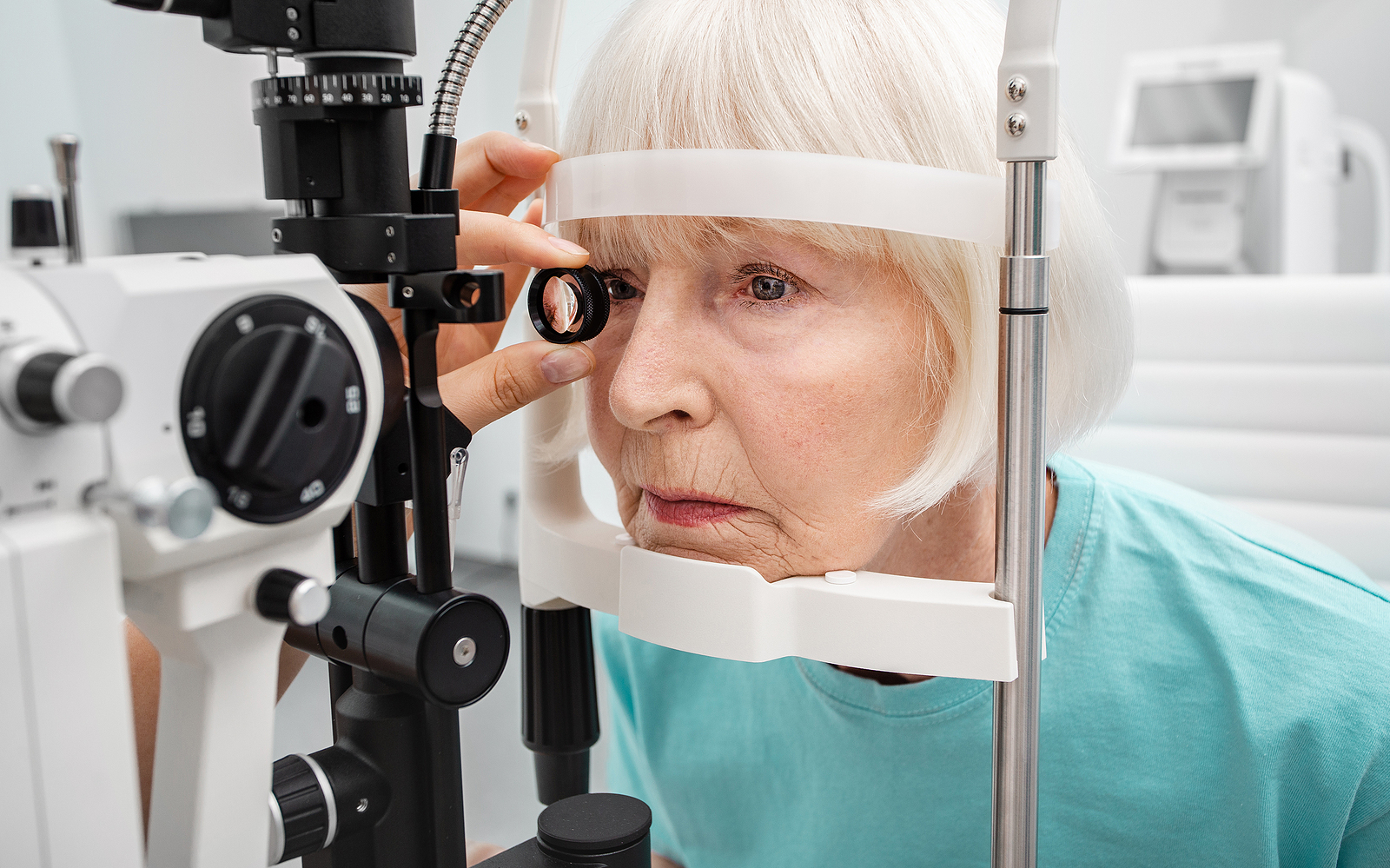The Seven Signs of Cataracts in Older Adults

Cataracts can sneak up on even the most vigilant patients. These seven signs may indicate that it’s time to see your eye doctor.
Cataracts, which can affect either one or both eyes, are the result of yellowing and thickening of the natural lens in the eye and are among the most common cause of impaired vision in America. Typically, the condition is associated with aging, but cataracts can also be a result of smoking and diabetes.
Initially, wearing glasses can help alleviate the symptoms of cataracts, but as the condition worsens, the only permanent solution is to replace the lens. Because cataracts develop so slowly, they’re barely noticeable at first — however, there are some early warning signs that you should look out for.
-
Difficulty driving at night
One of the first signs of cataracts is difficulty seeing at night, especially while driving. When cataracts first appear, bright lights and sunshine can alleviate the initial effects of the yellowing of the lens, but cataracts have nowhere to hide at night. Driving with compromised vision is dangerous, so if you’re finding that you have trouble seeing the road at night, diagnosing and treating your cataracts should be a high priority.
-
Difficulty seeing distant objects
Even in their early stages, cataracts decrease overall visual acuity. When this happens, far-away objects will become more difficult to see first. If you feel that you used to be able to read street signs or make out other objects from further away, you may be suffering from cataracts.
-
Blurry or dim vision
With cataracts, vision dims for the same reason that night vision becomes difficult — the yellowing and thickening of the lens make it difficult for light to pass through, so objects appear less bright. The thickening of the lens reduces flexibility, which reduces the eye’s ability to focus and in turn causes vision to blur.
-
Increased sensitivity to light
As cataracts become more severe, people who suffer from photophobia often report that bright lights become even more noticeable and problematic and that they’re constantly squinting or shielding their eyes. If lights in your home that you could once tolerate become unbearable, that could be a sign of cataracts.
-
Halos around light
Many patients begin to notice halos, or colored circles, around objects as their cataracts become increasingly severe. This occurs because the light bends as it passes through the hardened lens.
-
Brighter light needed to read the small print
Just as cataracts patients have a hard time making out far-away objects, small print that was always difficult to decipher will become even more so once cataracts begin to set in. Squinting at menus or reaching for glasses when reading the newspaper can be a natural part of aging, but in combination with other symptoms, it could be a sign of cataracts.
-
Double vision
In order to focus light properly, a muscle in the eye called the ciliary muscle changes the shape of the corneal lens. However, because cataracts harden the lens, the ciliary muscle has a tougher time getting the lens into the appropriate shape. Sometimes, this causes an inability to focus, which results in double vision.
If you have some or any of these symptoms — especially if you’re 55 or older — it’s likely that you’re developing cataracts. Take care of your vision proactively. Contact Swagel Wootton Eye Institute to make your appointment at our Mesa or Chandler locations today.
[DISPLAY_ULTIMATE_SOCIAL_ICONS]








